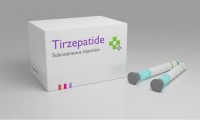-
AbbVie Passes on License Option for Harpoon’s TriTAC Multiple Myeloma Program
- Source: drugdu
- 106
- September 16, 2023
-
FDA to start review of subcutaneous Entyvio for Crohn’s disease
- Source: drugdu
- 127
- September 15, 2023
-
Alnylam Wins Adcomm’s Support for Heart Disease Drug Despite FDA Concerns
- Source: drugdu
- 113
- September 15, 2023
-
Coherus acquires immuno-oncology company Surface
- Source: drugdu
- 202
- September 13, 2023
-
Click Expands to Substance Use Disorder With Indivior Digital Therapeutics Pact
- Source: drugdu
- 175
- September 12, 2023
-
NICE recommends Lilly’s tirzepatide to treat T2D
- Source: drugdu
- 103
- September 12, 2023
-
Veracyte and Gustave Roussy announce partnership for cancer therapies
- Source: drugdu
- 141
- September 11, 2023
-
Researchers receive $2.5 million award to develop a tailored treatment for glioblastoma
- Source: drugdu
- 107
- September 7, 2023
-
New Biomarker Tests Aid Quick, Accurate Diagnosis of Alzheimer’s Disease
- Source: drugdu
- 186
- September 6, 2023
-
Centogene finds diagnostic and predictive biomarker for Gaucher disease
- Source: drugdu
- 173
- September 6, 2023
your submission has already been received.
OK
Subscribe
Please enter a valid Email address!
Submit
The most relevant industry news & insight will be sent to you every two weeks.













